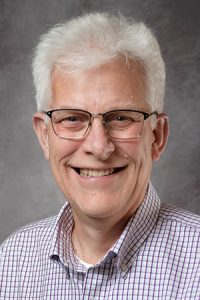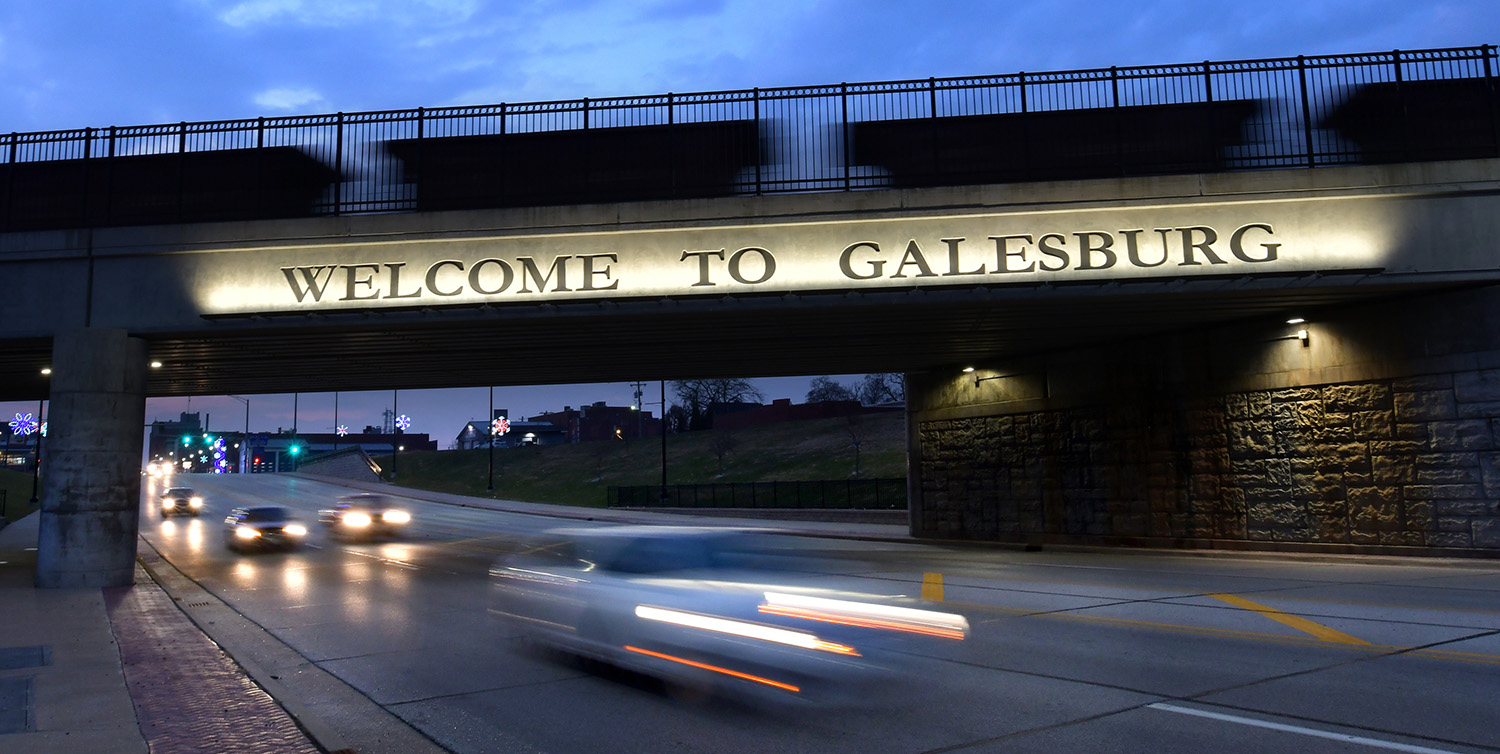History, tourism and industry keep this resilient city moving forward.
Galesburg is a railroad town. Evidence of the city’s proud railroading heritage is everywhere.
School sports teams have names like the Silver Streaks and Zephyrs, the children’s museum is The Discovery Depot, and local businesses such as The Iron Spike, Sidetrax Bar and Grill and Lieber’s Boxcar Express evoke the glory days of steel rails and steam engines.
It’s true that the only steam engine left in town is a stationary, albeit impressive, museum piece at the Galesburg Railroad Museum. And yet every June for 44 years, Galesburg Railroad Days has attracted thousands to celebrate and remember the past.
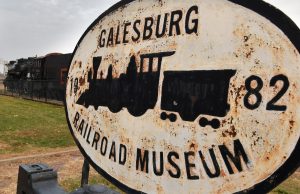
The massive railyard on the southwest side of town is the city’s largest employer. Even Lake Storey, the city’s recreational gem on the north side of town, was originally constructed to supply water for thirsty steam engines.
“We need to make sure that doesn’t go away,” said Randy Newcomb, executive director of the Galesburg Tourism and Visitors Bureau, about the city’s rich past. “It’s part of our history and we need to remember it.”
A Mix of Tourism and Industry
The more recent history of the local economy was dominated by manufacturers such as Maytag, which cranked out thousands of appliances for decades before its decline and closing shortly after the turn of this century. The loss of more than 3,000 jobs was a major, but not fatal, blow.
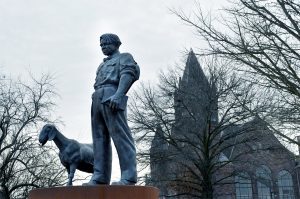
Newcomb said the city and surrounding Knox County now take in more than $83 million annually from visitors to attractions such as the shops and restaurants along historic Seminary Street, brew pubs, the magnificently restored Orpheum Theatre, the Lincoln-Douglas debate site at Knox College, and the boyhood home of Pulitzer prize-winning poet and Lincoln biographer Carl Sandburg.
The Discovery Depot Children’s Museum draws thousands from across Illinois, as does the Galesburg Railroad Museum. Some visitors arrive by car, while others travel to and from their adventures on Amtrak, which has multiple arrivals and departures daily.
Locals and visitors to this resilient city of 30,000 support a vibrant arts scene, several coffee shops, boutiques and dining experiences both casual and gourmet. The calendar is packed with festivals and events, including September’s National Stearman Fly-In, which has attracted thousands of enthusiasts for the World War II-era Stearman biplanes since 1971.
Thousands queue up each year for the Chocolate Festival, Carl Sandburg Days, the Rootabaga Jazz Festival, the Great Balloon Race and other events. The city has plans for an outdoor music and performance venue on Main Street in a space currently occupied by giant yellow letters spelling out “Galesburg.”
Amid all of this coming and going, there is a vision for the future.
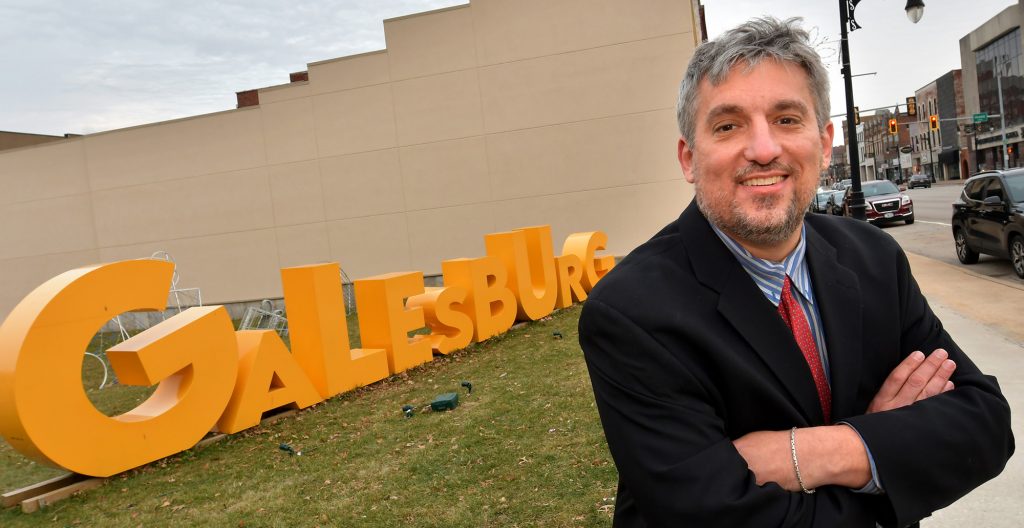
“Galesburg is a great place to live,” said first-term Mayor Peter Schwartzman. “It’s safe, easily walkable and the housing prices and cost of living are competitive with anywhere else in the country.
“Our biggest challenge is capturing people’s optimism and putting it into practice.”
Big Plans
Optimism and action abound at the $20 million library project at Main and Academy Streets. After nearly a decade of planning, the project broke ground in April 2022 and is expected to open in late 2023.
In addition, the city has contributed $1 million to the National Railroad Hall of Fame, a decades-long, nationally sanctioned initiative to build a state-of-the-art museum in Galesburg.
Along with plans for a new multi-purpose community center, the city has a five-year strategic plan that addresses population growth, educational achievement, public safety, the “unhoused” and renewable energy. There is even a goal to plant 400 trees — and they are already ahead of the five-year pace.
Schwartzman said initiatives such as a $15 million, community-wide upgrade to fiber optic broadband internet will play a critical role in attracting new businesses and families. Once the infrastructure is in place, the city will be the perfect home for e-commuters and technology businesses, he said.
BNSF Railway dominates the conventional employment picture today, with Blick Art Materials, one of the largest distributors of art products and supplies in the country (founded in Galesburg in 1911) close behind. Health care at OSF St. Mary Medical Center and other providers, and District 205 schools are also dominant employers.
In today’s economy, diversification is the key. “We can’t put all of our eggs in one basket,” Schwartzman said.
‘Our biggest challenge is capturing people’s optimism and putting it into practice.’ — Peter Schwartzman
Three hundred acres of city-owned farmland along I-74 known as Logistics Park has been mostly empty for 20 years. But Schwartzman said it is “beginning to get some traction.” A number of projects are in the works, including a 40-acre solar array installation.
The Heart of the City
“Downtown is the real heart of the city,” said Phil Dickinson, owner of Landmark Café and Creperie in the historic Seminary Street District. He is an unabashed supporter of continuing the emphasis on downtown economic development.
“We have a well-developed downtown now, but it hasn’t been easy or fast and it is always in flux,” he said. “If downtown is not heavily retail it will wither, and that’s not healthy for the community.”
“Resilient” is how Pam Gaither, executive director of the Galesburg Area Chamber of Commerce, characterizes Galesburg’s entrepreneurial spirit.
“There have been a lot of people step up to provide new opportunities,” she said. “You can find what you’re looking for here.”
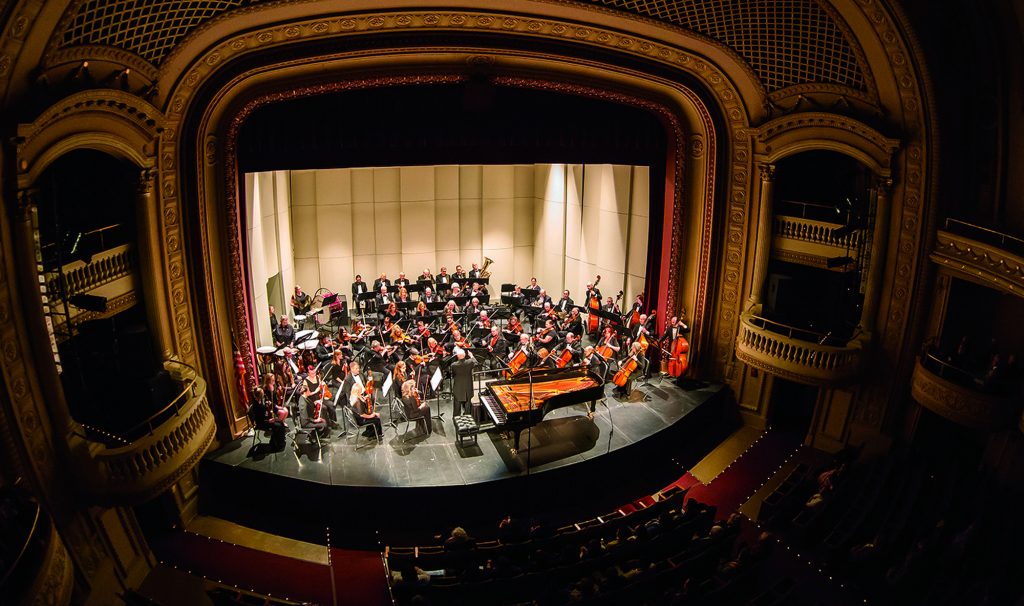
Most wouldn’t expect to find a 1911 vaudeville-era theater in a town like Galesburg, but there it is on South Kellogg Street, the Orpheum Theatre, drawing patrons and performers from far and wide. Erin Glansovich is executive director of the nonprofit that operates the theater. “Guests and performers are often surprised to be where they are,” she said. And still the Orpheum remains a hub for the performing arts year-round.
She credits the success of the venue to “a lot of community support.”
An Educational Tradition
Education was woven into the fabric of Galesburg from the start. Knox College was founded in 1837 by George Washington Gale (for whom the city is named) and the same group of abolitionists who established the town.
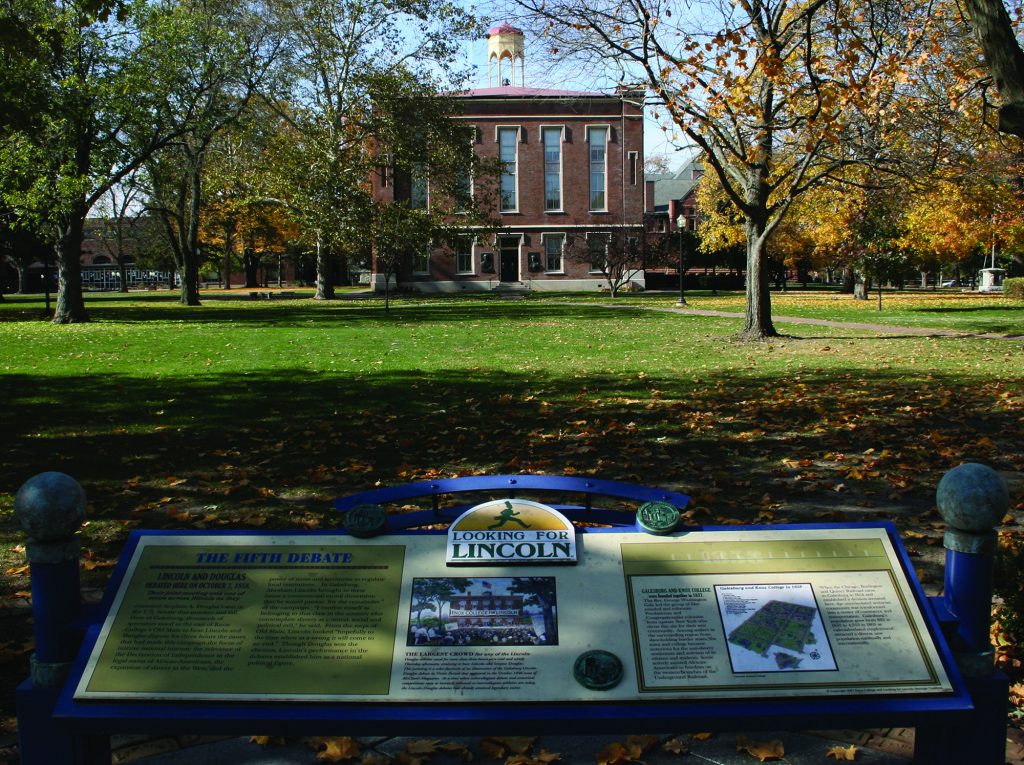
Today the campus occupies 82 acres bordering the downtown, distinguished by the Gothic Tudor architecture of Old Main, at 165 years the oldest building on campus, a National Historic Landmark designee and one of the few surviving sites to host one of the Lincoln-Douglas debates, in 1858. The nationally recognized liberal arts college employs a faculty of some 120, who teach approximately 1,200 undergraduates.
Schwartzman, who has taught environmental science at Knox since 1998, said Galesburg cannot thrive if the college suffers, and vice versa. “They are very much dependent on each other’s success,” he said.
On the north end of town is Carl Sandburg College, which offers more than 40 degree and certificate programs in agriculture, business, health sciences, information technology, manufacturing and public service.
“We want to keep students in the region and educate them for the jobs of the future,” Schwartzman said.
To that end, the city funds the Galesburg Promise program, which provides tuition grants to attend Sandburg as an incentive for Galesburg students to seek post-secondary education.
Galesburg District 205 schools have gone through “a flurry of activities” in the past four years to meet the community demand for more equitable learning facilities.
“Students now have far superior facilities than they had in 2017,” when the district embarked on an ambitious plan of renovation and consolidation that has resulted in the closing of schools, realignment of others and the consolidation of junior and senior high school students in one building, said Superintendent John Asplund.
“We need to make sure we are current in giving students the skills they need to work here in the community,” Asplund said. “We want to make sure we are producing as high-level thinkers as we possibly can for our community. Doers, dreamers, and good citizens.”
First a Dream
A sculpture of Carl Sandburg, the Pulitzer Prize-winning poet, author and editor and arguably Galesburg’s most famous native son, is the centerpiece of the town square. Lincoln is memorialized in stone at the Amtrak depot, and renowned Civil War nurse “Mother” Mary Bickerdyke at the Knox County Courthouse.
Newcomb continues to push for one more monument in this historic city: a permanent Ferris Wheel to recognize the engineering genius of George Washington Gale Ferris Jr., the Galesburg native who built the world’s first Ferris Wheel in Chicago in 1893.
As Carl Sandburg wrote in the poem, Washington Monument by Night, “Nothing happens unless first a dream.”
